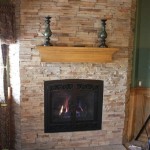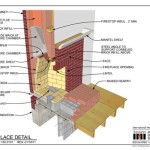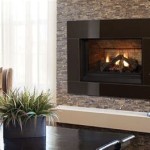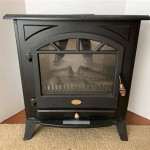LP Gas Stove Fireplace: A Comprehensive Overview
LP gas stove fireplaces offer a convenient and efficient alternative to traditional wood-burning fireplaces. They combine the aesthetics of a fireplace with the ease of use and consistent heating of a gas appliance. Powered by liquid propane (LP) gas, these fireplaces provide a controlled and readily available heat source, making them a popular choice for homeowners seeking supplemental heating and ambiance.
The fundamental principle behind an LP gas stove fireplace involves burning propane gas within a controlled combustion chamber. This combustion generates heat, which is then radiated into the surrounding room. The visible flames, often designed to mimic the appearance of a wood fire, contribute to the fireplace's aesthetic appeal. The gas supply is typically connected to a propane tank located either outside the home or within a dedicated enclosure, adhering to safety regulations and building codes. The gas flow is controlled by a valve, allowing users to adjust the flame height and heat output. Many models incorporate safety features such as oxygen depletion sensors (ODS) that automatically shut off the gas supply if the oxygen level in the room drops to a dangerous level.
LP gas fireplaces are generally characterized by their ease of installation and maintenance. Unlike wood-burning fireplaces, they do not require a chimney for exhaust, instead relying on direct vent or vent-free systems. Direct vent systems exhaust combustion byproducts directly to the outside through a sealed pipe, offering enhanced safety and efficiency. Vent-free systems, on the other hand, burn the gas more completely and release the exhaust directly into the room. Although vent-free models are permitted in some jurisdictions, their use should be carefully considered, ensuring proper ventilation and adherence to local regulations. Regular maintenance typically involves inspecting the gas lines, burner, and vent system (if applicable) to ensure proper operation and safety.
Key Advantages of LP Gas Stove Fireplaces
LP gas stove fireplaces offer several compelling advantages, making them a desirable heating option for many homeowners. These benefits range from convenience and efficiency to safety and environmental considerations.
One of the primary advantages is convenience. Unlike wood-burning fireplaces that require sourcing, storing, and hauling wood, LP gas fireplaces offer a consistent and readily available fuel source. The simple on/off operation, often controlled by a switch or remote, eliminates the need to build and maintain a fire. This convenience makes LP gas fireplaces an ideal choice for individuals seeking supplemental heating without the hassle associated with traditional firewood.
Efficiency is another key benefit. LP gas fireplaces generally convert a higher percentage of fuel into usable heat compared to wood-burning fireplaces. This efficiency translates to lower heating costs and reduced energy consumption. The ability to precisely control the flame height and heat output allows users to tailor the heating level to their specific needs, further optimizing energy efficiency. Furthermore, the absence of a chimney in direct vent models minimizes heat loss up the flue, contributing to the overall efficiency of the system.
Finally, LP gas fireplaces offer enhanced safety compared to wood-burning alternatives. The sealed combustion chamber and safety features such as ODS sensors reduce the risk of carbon monoxide poisoning and other hazards associated with incomplete combustion. The elimination of sparks and embers also minimizes the risk of house fires, making LP gas fireplaces a safer option for homeowners concerned about fire safety. Regular inspection and maintenance, as recommended by the manufacturer, are crucial for maintaining the safety and reliability of the appliance.
Ventilation Options: Direct Vent vs. Vent-Free
The ventilation system is a critical aspect of LP gas stove fireplaces, directly impacting safety and indoor air quality. Two primary ventilation options are available: direct vent and vent-free. Each system offers distinct advantages and disadvantages, influencing their suitability for different applications.
Direct vent fireplaces utilize a sealed combustion system that draws air from outside the home for combustion and vents exhaust gases directly to the outside through a dedicated pipe. This sealed system prevents combustion byproducts from entering the living space, ensuring superior indoor air quality and minimizing the risk of carbon monoxide poisoning. Direct vent systems are generally considered the safest and most efficient option, making them a preferred choice for many homeowners seeking a reliable and safe heating source. The installation process typically involves running the vent pipe through an exterior wall or roof, requiring professional installation to ensure proper sealing and adherence to building codes.
Vent-free fireplaces, also known as ventless fireplaces, do not require a chimney or vent. They burn propane gas with a high degree of efficiency, releasing the combustion byproducts directly into the room. While vent-free fireplaces offer installation flexibility and can be a cost-effective option, they also raise concerns about indoor air quality. The combustion process, even with high-efficiency burners, produces small amounts of carbon monoxide, nitrogen dioxide, and water vapor. These byproducts can potentially impact indoor air quality, especially in poorly ventilated spaces. Proper ventilation is crucial when using vent-free fireplaces, and they should only be used in rooms that meet the minimum square footage requirements specified by the manufacturer and local regulations.
The choice between direct vent and vent-free fireplaces depends on individual needs, budget, and local regulations. Direct vent systems offer superior safety and indoor air quality, while vent-free systems provide installation flexibility and potentially lower upfront costs. Homeowners should carefully consider the pros and cons of each system before making a decision, consulting with a qualified HVAC professional to determine the best option for their specific circumstances.
Maintenance and Safety Considerations
Proper maintenance is essential for ensuring the safe and efficient operation of an LP gas stove fireplace. Regular inspections and preventative maintenance can help identify potential problems before they escalate, preventing costly repairs and ensuring the safety of the occupants.
One of the most important maintenance tasks is inspecting the gas lines for leaks. This can be done using a soapy water solution applied to the gas connections. If bubbles appear, it indicates a leak, and the gas supply should be shut off immediately, and a qualified technician should be contacted to repair the leak. Regular inspection of the burner assembly is also crucial. The burner should be cleaned periodically to remove any debris or obstructions that could impede proper combustion. The burner ports should be clear and free from soot or carbon buildup.
For direct vent systems, the vent pipe should be inspected annually for any signs of damage or blockage. Birds' nests, debris, or other obstructions can reduce the efficiency of the venting system and potentially lead to carbon monoxide buildup. Vent-free fireplaces require particularly diligent monitoring of indoor air quality. Carbon monoxide detectors should be installed and regularly tested to ensure they are functioning correctly. Users should also be aware of the symptoms of carbon monoxide poisoning, such as headache, dizziness, and nausea.
In addition to regular maintenance, it is essential to follow all safety recommendations provided by the manufacturer. This includes using the fireplace only as intended, never storing flammable materials near the appliance, and ensuring that the area around the fireplace is clear of obstructions. Regularly checking the oxygen depletion sensor (ODS) is also important to ensure it is functioning correctly. By adhering to these maintenance and safety guidelines, homeowners can enjoy the benefits of an LP gas stove fireplace while minimizing the risks associated with gas-burning appliances.

Gas Stoves Made In Usa Lopi

Stoves Wood Gas Pellet Lopi

Propane Fireplaces Gas Stoves Id Mt Wy Fall River

Fireside Franklin Soapstone Gas Stove Woodstove

Napoleon Arlington Direct Vent Cast Iron Gas Stove

Fireside Franklin Soapstone Gas Stove Woodstove

Lopi Gas Stoves Custom Hearth Fireplaces And

Freestanding Gas Stoves Stove Fireplaces Napoleon

Lakefield Xl Direct Vent Freestanding Gas Fireplace Stove Kozy Heat

Propane Freestanding Stoves From Stewart S Hearth In Miramichi
Related Posts








